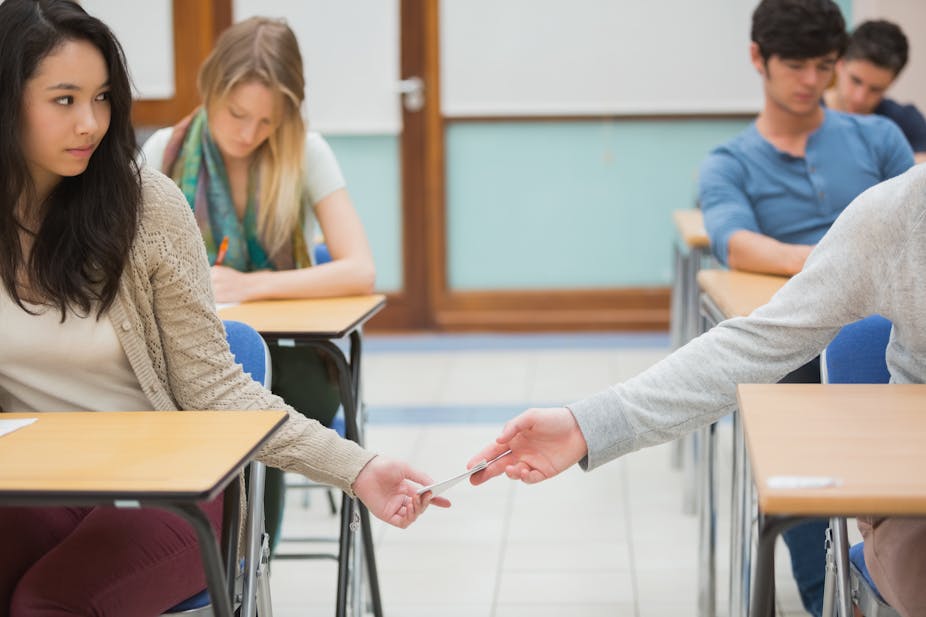A few years ago a group of psychologists from two North American universities ran a fascinating experiment designed to see whether the quality of light in a room influenced people’s willingness to cheat on a test.
They separated their study participants into brightly lit and dimly lit rooms, and gave them a simple mathematical task to complete, along with two envelopes: one empty, and one full of money.
The subjects were told that after they had completed the test, they could check their answers and reward themselves for each right answer with fifty cents from the full envelope, and then place the remaining money in the empty envelope and take it home. When the originally full envelopes were collected from the two rooms, the researchers counted the money and found that subjects in the bright room had rewarded themselves for around eight correct answers; those in the dim room averaged over eleven.
In subsequent experiments, as reported in the journal Psychology Today, the same researchers discovered that even darkening the perception of the subjects, by giving them sunglasses, raised their willingness to cheat on the tests.
Quirky though this study may seem, it forms part of an increasing awareness by scholars in psychology and behavioural theory that the environment in which people complete tasks can play a significant role in their decision to cheat. Dan Ariely, a behavioural economist at Duke University, has argued persuasively in his book The (Honest) Truth About Dishonesty that the amount of dishonest behaviour in which people are willing engage, to a large extent, “depends on the structure of their daily environment.”
This insight into human behaviour should help us think in new ways about the problem of cheating in education. Most research into cheating in schools and universities, over the course of the past 50 years, has focused on the character or demographics of the cheater.
Researchers have sought to discover whether men cheat more than women (they used to, but the numbers have evened out in recent years), or younger students cheat more than older students (they do), and so on. The problem with this research is that it assumes the decision to cheat depends entirely upon the character of the student.
The work of Ariely and other cheating researchers has demonstrated to us that there is more to the story. If the environment plays a crucial role in determining whether or not someone cheats, then we should also take into account the environment in which school cheating occurs—namely, school.
Are there features of the learning environments that we create for students in our educational institutions that nudge them toward cheating? Could the design of our classrooms, of our courses, and of assessment make a substantial contribution toward their willingness to cheat or not to cheat?
My own research into cheating in higher education began with this hypothesis, and sought to uncover what specific features of course design and teaching practice might play a role in a student’s decision to cheat. And while I did find plenty of evidence to support that hypothesis, I also made the surprising discovery that those aspects of a course that induced students to cheat also reduced student learning in the course, even for those students who didn’t cheat.
So it turns out that research into academic dishonesty can help us identify some key ways to improve the courses we design for our students.
One of the key features of course design that can influence cheating levels relates to the learning orientation of both the student and the classroom: namely, whether they are oriented toward mastery or performance (or as it is sometimes referred to towards “deep” or “surface learning”).
We have plenty of evidence that classrooms which orient students towards mastery learning produce more substantive and longer-lasting levels of learning than those which orient students towards performance. A substantial line of research also suggests that when students perceive their classrooms as primarily performance oriented, they are more likely to cheat.
So what distinguishes a mastery-oriented course from a performance-oriented one? The key factors seem to be choice and control.
In a mastery-oriented course, the student perceives that she has some control over the processes and products of her learning, and she has some choice in how to demonstrate her learning to the instructor.
In other words, rather than asking every student to jump through the same set of hoops, the instructor offers students the opportunity to select among a menu of options to demonstrate their learning, allowing the students to select the tasks that interest them and play to their intellectual strengths.
This type of learning environment often exists at lower levels of education — such as in my wife’s kindergarten classroom — but once students reach our university classrooms, we typically expect them all to follow the same rigidly defined paths toward course and degree completion.
We might feel that older students don’t need the type of choices that we give to younger children — but the research on both cheating and human learning tells us that the same principles that produce deeper learning and less cheating in younger grades apply to our higher education students as well.
So in addition to turning up the lights in the classroom, we should turn our attention to the role that we can play in inducing and reducing cheating in higher education. While we should never let cheating students off the hook, or blame ourselves for the problem, we owe it to them — and to ourselves — to consider how our course design and classroom practice can give them all the help they need in order to support academically honest work.
James M. Lang is the author of Cheating Lessons: Learning from Academic Dishonesty (Harvard University Press, 2013)

